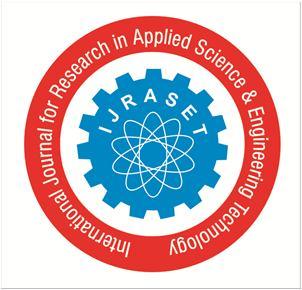
2 minute read
Optimization of Wire Cut Electro Discharge Machining Process Parameters for HCHCr-D2 Steel
from Optimization of Wire Cut Electro Discharge Machining Process Parameters for HCHCr-D2 Steel
by IJRASET
Anand K1 , Abinesh M2 , Anishraj S B3 , Hariharan K4 , Kaviyarasu T5
1Assistant Professor, Department of Mechanical Engineering, Paavai Engineering College, Namakkal, India
Advertisement

UG Student, Department of Mechanical Engineering, Paavai Engineering College, Namakkal, India
Abstract: The process parameters for wire cut electro discharge are optimised in this paper. The analysis takes into account the process parameters pulse on time, pulse off time, and current. High Carbon High Chromium (HCHCr-D2) steel is a high tensile strength alloy that is typically utilised in cold dies and tooling applications that demand a high level of and dimensional accuracy. For the machining procedure, a rectangular-shaped plate of the alloy steel HCHCr-D2 was used. By examining the material removal rate (MMR) and surface roughness, wire cut electro discharge machine (WEDM) performance using a molybdenum wire has been evaluated (SR).
Keywords: Optimization, Material Removal Rate, Surface Roughness.
I. INTRODUCTION
A high level of resistance, high wear and tear, hardness, strength, and toughness are now required by the industries that produce tools, dies, moulds, and metalworking. The development of novel materials such as titanium, inconel, ceramics, zirconium, stainless steel, carbides, and many other high strength temperature resistant alloys has led to their widespread application in the automotive, aerospace, medical, defence, and tool and die production industries. Such materials make ordinary machining challenging and occasionally impossible. For exceptionally hard and brittle materials, non-traditional procedures are used in place of traditional ones.
Wire cut electrical discharge machining is one such unconventional method (WEDM). An example of contemporary manufacturing is the production process. In order to erode the work material by creating sparks between the work and tool, the WEDM uses a wire that transforms into a tool when current flows through it. To remove the material by erosive action and prevent overheating, the tool and work piece are partially or fully submerged in a dielectric fluid. Computer numerical control (CNC) systems typically maintain a space between the work piece and the wire that ranges from 0.015 to 0.05 mm. The manufacturing of moulds and dies, as well as the aerospace and automobile industries, mostly utilise this method Most industries are driven by the desire for higher productivity at the lowest possible cost. WEDM must be carried out more effectively due to the rising demand for high-quality products as well as for increased productivity. The modelling and optimization of process parameters to produce a high-quality product while lowering production costs is thus one of the most intriguing and research-intensive fields
II. SELECTION OFMATERIAL
In this study, the workpiece is made of HCHCr-D2 steel. Size is offered in square, flat, and round shapes. This substance is primarily applied in the manufacturing of moulds and dies, and time, pulse off time, and WEDM current affect the rate of material removal (MMR), as well as the surface roughness (SR). The item code for material HCHCr steel is D2. Table 1 displays the chemical composition of HCHCr-D2 Steel.




